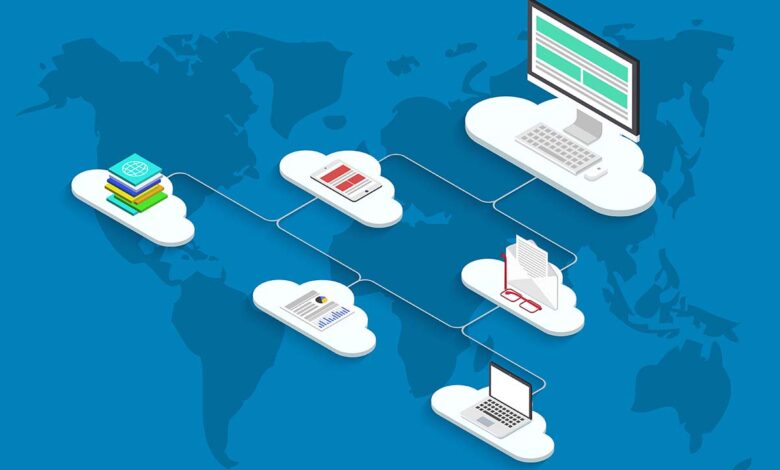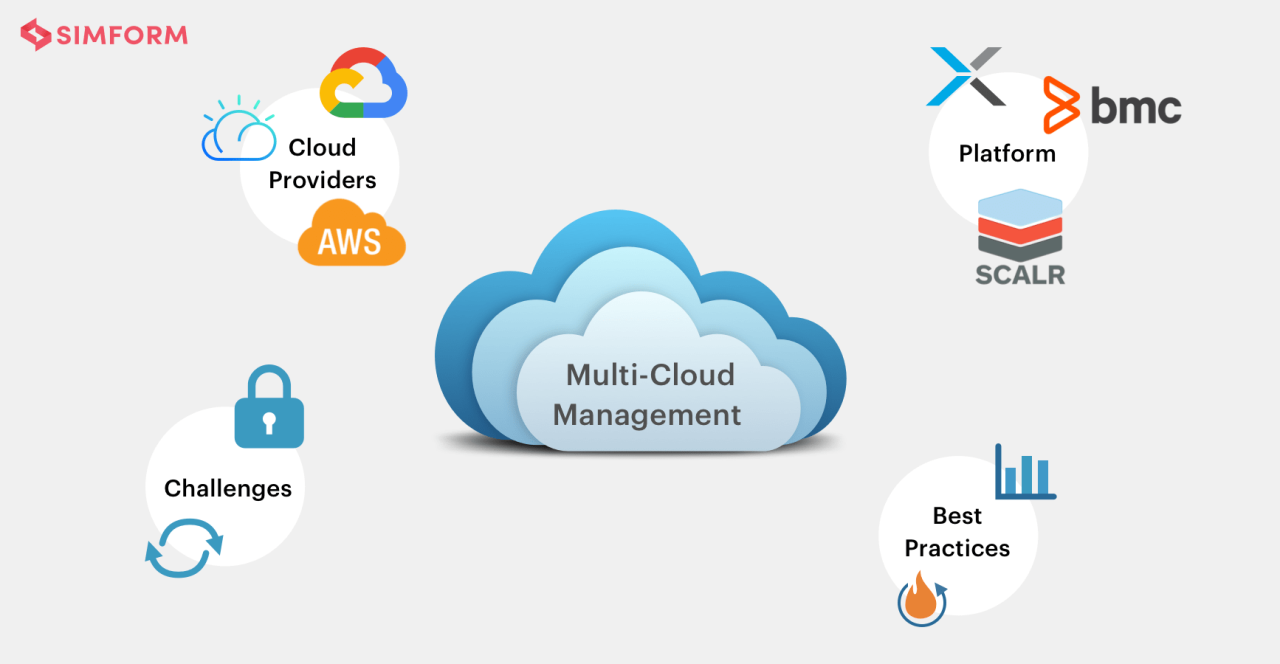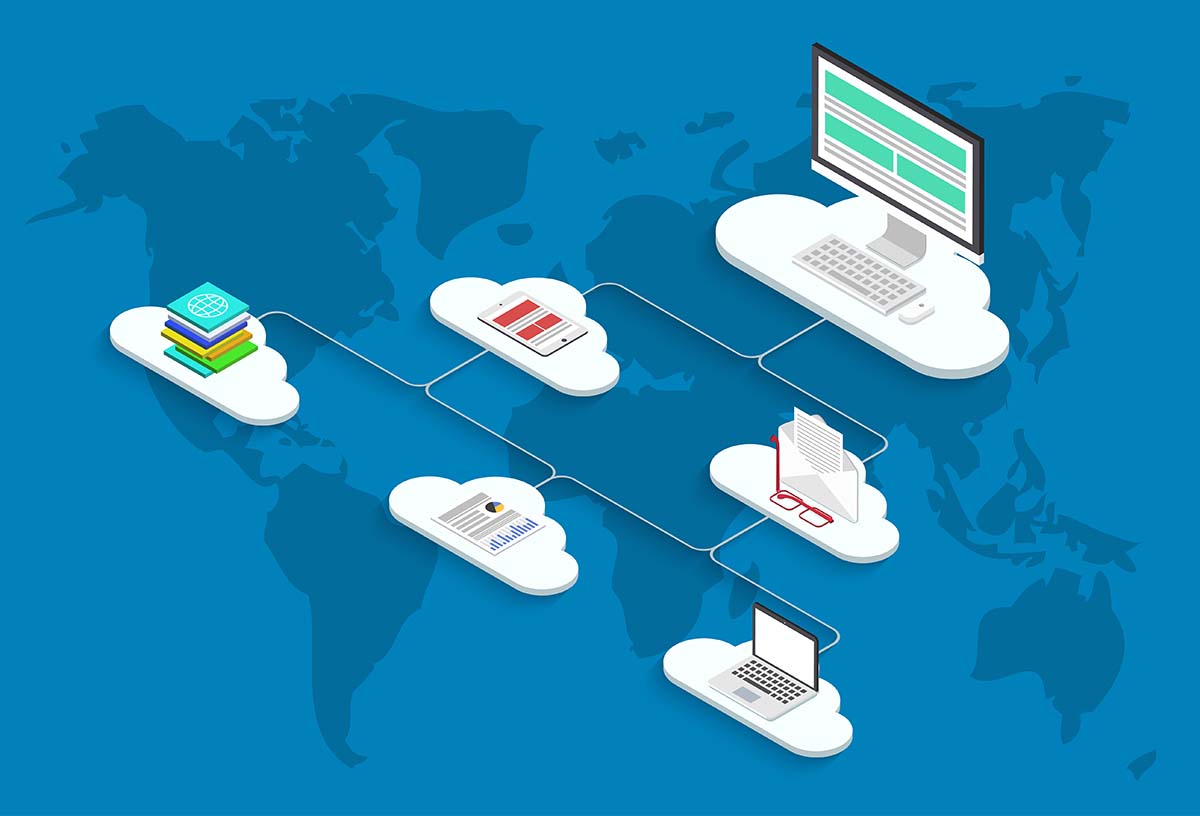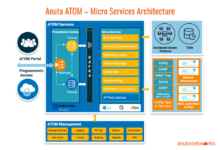Unlocking Agility and Innovation with Multi-cloud Networking Platforms

Embark on a journey into the realm of Multi-cloud networking platforms, where flexibility, security, and performance converge. In this comprehensive guide, we’ll delve into the essence of these platforms, exploring their benefits, challenges, and best practices. Join us as we unravel the transformative power of multi-cloud networking, empowering businesses to achieve unprecedented levels of agility and innovation.
Multi-cloud networking platforms offer a paradigm shift in network management, enabling organizations to seamlessly integrate and orchestrate multiple cloud environments. These platforms provide a unified control plane, allowing for centralized management of network resources across different cloud providers. By leveraging the strengths of each cloud provider, businesses can optimize performance, reduce costs, and enhance security.
Definition of Multi-cloud Networking Platforms

Multi-cloud networking platforms are software-defined networking (SDN) solutions that enable organizations to connect and manage multiple cloud environments from a single, centralized platform. These platforms provide a unified view of all cloud networks, regardless of the underlying cloud provider or technology, simplifying management and reducing operational costs.
Examples of multi-cloud networking platforms include:
- Cisco Intercloud Fabric
- VMware NSX
- Amazon VPC Transit Gateway
Benefits of using multi-cloud networking platforms include:
- Improved visibility and control over all cloud networks
- Simplified management and reduced operational costs
- Increased flexibility and agility
Challenges of using multi-cloud networking platforms include:
- Complexity of managing multiple cloud environments
- Security concerns
- Cost
Benefits of Multi-cloud Networking Platforms
Multi-cloud networking platforms offer a range of advantages that can benefit businesses of all sizes. These include improved agility and flexibility, reduced costs, increased security, and improved performance.
Improved Agility and Flexibility
Multi-cloud networking platforms allow businesses to quickly and easily connect to multiple cloud providers, giving them the flexibility to choose the best cloud services for their needs. This can help businesses to respond more quickly to changing market conditions and to take advantage of new opportunities.
Reduced Costs
Multi-cloud networking platforms can help businesses to reduce costs by optimizing their use of cloud resources. By connecting to multiple cloud providers, businesses can take advantage of the best prices and avoid vendor lock-in.
Increased Security
Multi-cloud networking platforms can help businesses to improve the security of their data and applications. By connecting to multiple cloud providers, businesses can create a more resilient and secure IT infrastructure.
Improved Performance
Multi-cloud networking platforms can help businesses to improve the performance of their applications. By connecting to multiple cloud providers, businesses can distribute their applications across multiple regions and data centers, which can reduce latency and improve overall performance.
Key Features of Multi-cloud Networking Platforms
Multi-cloud networking platforms offer a comprehensive suite of features that empower enterprises to seamlessly connect, manage, and optimize their multi-cloud environments. These features are categorized into essential groups, including security, performance, scalability, and management, each playing a vital role in delivering a robust and efficient multi-cloud networking experience.
Security
Multi-cloud networking platforms prioritize security by providing advanced features such as:
-
-*Network Segmentation
Isolating workloads into separate virtual networks to enhance security and compliance.
-*Firewall as a Service (FWaaS)
Implementing stateful firewalls to control traffic flow and protect against unauthorized access.
-*Intrusion Detection and Prevention (IDS/IPS)
Monitoring network traffic for malicious activity and proactively blocking threats.
Performance
These platforms optimize network performance through:
-
-*Load Balancing
Distributing traffic across multiple servers to ensure optimal resource utilization and reduce latency.
-*Traffic Steering
Directing traffic based on specific criteria (e.g., location, application) to enhance performance and user experience.
-*Quality of Service (QoS)
Prioritizing network traffic to ensure critical applications receive the necessary bandwidth.
Scalability
Multi-cloud networking platforms are designed to handle dynamic and growing network environments with:
-
-*Elastic Networking
Automatically scaling network resources up or down based on demand, ensuring optimal performance without overprovisioning.
-*Multi-Region Support
Extending network connectivity across multiple regions for increased availability and redundancy.
-*Cloud Interconnects
Establishing high-speed, low-latency connections between on-premises data centers and cloud providers.
Management
These platforms simplify multi-cloud network management with:
-
-*Centralized Management
Providing a single pane of glass for managing all network resources across multiple clouds.
-*Automated Provisioning
Streamlining the creation and configuration of network resources through automation.
-*Monitoring and Analytics
Continuously monitoring network performance and providing insights for proactive troubleshooting and optimization.
| Feature Category | Features |
|---|---|
| Security | Network Segmentation, FWaaS, IDS/IPS |
| Performance | Load Balancing, Traffic Steering, QoS |
| Scalability | Elastic Networking, Multi-Region Support, Cloud Interconnects |
| Management | Centralized Management, Automated Provisioning, Monitoring and Analytics |
5. Use Cases for Multi-cloud Networking Platforms
Multi-cloud networking platforms offer a wide range of use cases that can benefit businesses across industries. These platforms enable enterprises to connect and manage multiple cloud environments seamlessly, unlocking new possibilities for innovation and growth.
Disaster Recovery and Business Continuity
- Multi-cloud networking platforms provide a robust disaster recovery solution by replicating data and applications across multiple cloud environments. In the event of an outage or disaster in one cloud, businesses can quickly failover to another cloud to maintain operations and minimize downtime.
Cloud Migration and Consolidation
- Multi-cloud networking platforms simplify the migration of applications and workloads to the cloud. They provide a centralized platform for managing connectivity and security across multiple cloud providers, enabling businesses to consolidate their cloud infrastructure and reduce costs.
Hybrid Cloud Connectivity
- Multi-cloud networking platforms enable businesses to seamlessly connect their on-premises infrastructure with multiple cloud environments. This hybrid cloud connectivity allows organizations to leverage the benefits of both public and private clouds, while maintaining control over sensitive data and applications.
Workload Optimization
- Multi-cloud networking platforms provide tools for optimizing workload placement and performance. They can analyze application traffic patterns and network performance to identify the best cloud environment for each workload, ensuring optimal performance and cost efficiency.
Cloud-Native Application Development
- Multi-cloud networking platforms support the development and deployment of cloud-native applications. They provide a consistent networking experience across multiple cloud environments, enabling developers to build and deploy applications that are portable and scalable.
Trends in Multi-cloud Networking Platforms
Multi-cloud networking platforms are rapidly evolving to meet the changing needs of enterprises. The latest trends include:
- Increased adoption of cloud-native technologies:Cloud-native technologies, such as containers and Kubernetes, are becoming increasingly popular for deploying and managing applications in the cloud. This is driving the demand for multi-cloud networking platforms that can support these technologies.
- Greater focus on security:Security is a top concern for enterprises using multi-cloud environments. Multi-cloud networking platforms are responding to this need by providing a range of security features, such as encryption, access control, and threat detection.
- Improved performance and scalability:Enterprises are demanding multi-cloud networking platforms that can deliver high performance and scalability. This is being achieved through the use of new technologies, such as software-defined networking (SDN) and network function virtualization (NFV).
- Enhanced automation and orchestration:Automation and orchestration are essential for managing complex multi-cloud environments. Multi-cloud networking platforms are providing a range of tools and capabilities to help enterprises automate and orchestrate their networks.
These trends are shaping the future of multi-cloud networking platforms. By embracing these trends, enterprises can improve the performance, security, and scalability of their multi-cloud environments.
Key Innovations in Multi-cloud Networking Platforms
In addition to the trends discussed above, there are a number of key innovations that are driving the development of multi-cloud networking platforms. These include:
- Service mesh:A service mesh is a network of microservices that provides a range of networking and security services. Service meshes are becoming increasingly popular for managing microservices-based applications in multi-cloud environments.
- Network function virtualization (NFV):NFV is a technology that allows network functions to be virtualized and run on standard hardware. NFV is helping to reduce the cost and complexity of managing multi-cloud networks.
- Software-defined networking (SDN):SDN is a technology that allows networks to be programmed and managed through software. SDN is providing greater flexibility and control over multi-cloud networks.
These innovations are helping to make multi-cloud networking platforms more powerful, flexible, and scalable. As a result, enterprises are increasingly adopting multi-cloud networking platforms to manage their complex multi-cloud environments.
Future of Multi-cloud Networking Platforms
The future of multi-cloud networking platforms is bright, as they are expected to become even more essential for businesses in the years to come. As businesses continue to adopt cloud-based applications and services, the need for robust and flexible networking solutions will only increase.
Multi-cloud networking platforms are well-positioned to meet this need, as they offer a number of advantages over traditional networking solutions, including:
- Improved agility and scalability
- Reduced costs
- Increased security
- Improved application performance
In addition, multi-cloud networking platforms are constantly evolving to incorporate new technologies and features. For example, many platforms now offer support for artificial intelligence (AI) and machine learning (ML), which can be used to automate network management tasks and improve performance.
Emerging Technologies and Multi-cloud Networking
The emergence of new technologies, such as AI, 5G, and the Internet of Things (IoT), is also expected to have a significant impact on the development and adoption of multi-cloud networking platforms.AI and ML can be used to automate a variety of network management tasks, such as traffic optimization, security monitoring, and fault detection.
This can free up IT staff to focus on more strategic initiatives.G networks offer significantly faster speeds and lower latency than previous generations of wireless technology. This makes them ideal for supporting cloud-based applications and services, and will likely drive the adoption of multi-cloud networking platforms.The
IoT is expected to connect billions of devices to the internet in the coming years. These devices will generate a massive amount of data, which will need to be processed and analyzed. Multi-cloud networking platforms can provide the necessary infrastructure to support the IoT, and will play a key role in enabling the development of new IoT applications and services.
Key Benefits and Challenges of Multi-cloud Networking
|
- *Benefits |
- *Challenges |
|—|—|| Improved agility and scalability | Complexity and management overhead || Reduced costs | Security concerns || Increased security | Vendor lock-in || Improved application performance | Performance degradation |
Recommendations for Adopting Multi-cloud Networking
Organizations considering adopting multi-cloud networking should keep the following recommendations in mind:
- Start with a clear understanding of your business needs.
- Choose a multi-cloud networking platform that is a good fit for your needs.
- Develop a comprehensive implementation plan.
- Monitor your network performance closely.
- Be prepared to invest in ongoing training and support.
Code Sample
The following code sample shows how to use a multi-cloud networking platform to create a virtual private cloud (VPC):“`import google.cloud.compute_v1 as compute_v1from google.cloud import resource_manager# TODO(developer): Set your own values for these variablesPROJECT_ID = ‘your-project-id’NETWORK_NAME = ‘your-network-name’SUBNETWORK_NAME = ‘your-subnetwork-name’REGION = ‘us-central1’def create_vpc(project_id: str, network_name: str, subnetwork_name: str, region: str)
-> compute_v1.Network
“”” Creates a simple VPC network and subnetwork using the Compute Engine API. Args: project_id: project ID or project number of the Cloud project you want to use.
network_name: name of the network you want to create. subnetwork_name: name of the subnetwork you want to create. region: name of the region you want to create the network in.
For example: “us-central1” Returns: An object representing the network you created. “”” # Initialize client that will be used to send requests. This client only needs to be created # once, and can be reused for multiple requests.
client = compute_v1.NetworksClient() # Set the parent for the request. parent = f”projects/project_id” # Set the body of the request. network_resource = compute_v1.Network() network_resource.name
= network_name network_resource.auto_create_subnetworks = False # Prepare the request to insert a network. request = compute_v1.InsertNetworkRequest() request.project = project_id request.network_resource
= network_resource # Wait for the create operation to complete. operation = client.insert(request=request, project=project_id) operation.result(timeout=120) # Set the parent for the request. parent = f”projects/project_id/global/networks/network_name” # Set the body of the request.
subnetwork_resource = compute_v1.Subnetwork() subnetwork_resource.name = subnetwork_name subnetwork_resource.network = parent subnetwork_resource.region = region subnetwork_resource.ip_cidr_range
= “10.0.0.0/24” # Prepare the request to insert a subnetwork. request = compute_v1.InsertSubnetworkRequest() request.project = project_id request.subnetwork_resource = subnetwork_resource request.region
= region # Wait for the create operation to complete. operation = client.insert(request=request, project=project_id, region=region) operation.result(timeout=120) # Retrieve the network object that was just created. network = client.get(project=project_id,
network=network_name) return network
Best Practices for Implementing Multi-cloud Networking Platforms
Implementing multi-cloud networking platforms requires careful planning and execution to ensure a successful and efficient deployment. Here’s a step-by-step guide to help you navigate the process effectively:
Pre-implementation Planning
Before embarking on implementation, it’s crucial to define your business objectives, assess your current network infrastructure, and gather a team with the necessary skills and expertise. Conduct thorough research to understand the capabilities and offerings of different cloud providers.
Network Design and Architecture
Design a multi-cloud network architecture that aligns with your business needs and technical requirements. Consider factors such as latency, bandwidth, security, and cost when choosing cloud providers and designing the network topology.
Cloud Provider Selection
Evaluate and compare cloud providers based on their offerings, pricing models, SLAs, and support services. Choose providers that offer the right mix of features, performance, and cost to meet your specific requirements.
Implementation and Configuration
Follow best practices for implementing multi-cloud networking, including using cloud-native tools, automating tasks, and implementing proper security measures. Configure network settings, create virtual networks, and establish connectivity between cloud providers.
Monitoring and Troubleshooting
Establish a robust monitoring and troubleshooting framework to ensure the smooth operation of your multi-cloud network. Use cloud-based monitoring tools to track network performance, identify issues, and resolve them promptly.
Tips and Best Practices from Experienced Professionals
Common Challenges and Pitfalls:
- Network complexity and interoperability issues
- Security vulnerabilities and compliance concerns
- Cost optimization and cloud provider lock-in
Performance Optimization Techniques:
- Use cloud-native networking services
- Optimize routing and traffic management
- Implement load balancing and auto-scaling
Security Considerations:
- Implement micro-segmentation and access controls
- Use encryption and data protection measures
- Establish security monitoring and incident response plans
Cost Optimization Strategies:
- Negotiate discounts and usage-based pricing
- Use cloud cost management tools
- Consider multi-cloud strategies to leverage provider-specific advantages
Security Considerations for Multi-cloud Networking Platforms

Multi-cloud networking platforms introduce unique security risks and challenges that require careful consideration and mitigation strategies. Understanding these risks and implementing robust security measures is crucial for protecting data, applications, and infrastructure.
One of the primary risks associated with multi-cloud networking is the increased attack surface. By connecting multiple cloud environments, organizations create more entry points for potential attackers. Additionally, the complexity of managing multiple cloud providers and their respective security controls can lead to vulnerabilities.
Mitigating Security Risks
To mitigate these risks, organizations should adopt a comprehensive security strategy that includes:
- Centralized Security Management:Implementing a centralized security management platform that provides visibility and control across all cloud environments.
- Identity and Access Management:Establishing robust identity and access management policies to control access to cloud resources and prevent unauthorized access.
- Network Segmentation:Dividing the network into isolated segments to limit the spread of threats and protect critical assets.
- Encryption:Encrypting data at rest and in transit to protect sensitive information from unauthorized access.
- Security Monitoring:Continuously monitoring the network for suspicious activity and implementing automated threat detection and response mechanisms.
Cost Analysis of Multi-cloud Networking Platforms
Multi-cloud networking platforms can offer significant cost benefits compared to traditional networking solutions. However, it’s crucial to consider the various cost factors involved before implementing a multi-cloud networking platform.
Licensing Fees
Licensing fees are typically charged for proprietary multi-cloud networking platforms. These fees vary depending on the platform’s features, capabilities, and vendor. Open source multi-cloud networking platforms, on the other hand, are generally free to use, but may require additional costs for support and maintenance.
Usage Fees
Usage fees are often charged based on the amount of resources consumed, such as data transfer, storage, and compute. These fees can vary significantly between different multi-cloud networking platforms, so it’s important to compare costs before making a decision.
Support Costs
Support costs cover the assistance provided by the vendor in case of technical issues or troubleshooting. Some multi-cloud networking platforms offer free support, while others charge a premium for this service. It’s important to consider the level of support required and factor in the associated costs.
Vendor Landscape for Multi-cloud Networking Platforms
The multi-cloud networking platform market is a rapidly growing and evolving space, with a number of leading vendors offering a variety of solutions. Some of the key players in this market include:
- Cisco
- VMware
- Microsoft
- Amazon Web Services (AWS)
- Google Cloud Platform (GCP)
These vendors offer a range of solutions that can help enterprises connect and manage their multi-cloud environments. Cisco, for example, offers its Cloud Networking Platform, which provides a single pane of glass for managing network resources across multiple clouds. VMware offers its NSX Cloud, which provides a software-defined networking (SDN) platform that can be used to create and manage virtual networks across multiple clouds.
Microsoft offers its Azure Virtual WAN, which provides a managed wide area network (WAN) service that can be used to connect multiple clouds and on-premises networks. AWS offers its VPC (Virtual Private Cloud) Peering service, which allows customers to connect their VPCs to other VPCs in the same or different regions.
GCP offers its Cloud Interconnect service, which allows customers to connect their on-premises networks to GCP.The market share of these vendors varies depending on the specific region and market segment. However, Cisco, VMware, and Microsoft are generally considered to be the leading vendors in this market.
Case Studies of Multi-cloud Networking Platforms

Multi-cloud networking platforms have proven their worth in real-world scenarios, delivering tangible benefits to organizations across industries. Here are some notable case studies that showcase the power of these platforms:
Case Study: Global Financial Services Company
- Organization Name:XYZ Financial
- Industry:Financial Services
- Cloud Providers Used:AWS, Azure, Google Cloud
- Benefits Achieved:
- Reduced network latency by 30%
- Improved application performance by 25%
- Enhanced security posture with centralized visibility and control
- Challenges Faced:
- Managing network complexity across multiple clouds
- Ensuring consistent network policies and security across different cloud environments
Case Study: E-commerce Retailer
- Organization Name:ABC E-commerce
- Industry:Retail
- Cloud Providers Used:AWS, Azure
- Benefits Achieved:
- Reduced network costs by 20%
- Improved website load times by 15%
- Increased customer satisfaction and loyalty
- Challenges Faced:
- Optimizing network performance for high-traffic e-commerce workloads
- Ensuring network availability and reliability during peak shopping periods
Case Study: Healthcare Provider, Multi-cloud networking platforms
- Organization Name:XYZ Healthcare
- Industry:Healthcare
- Cloud Providers Used:AWS, Google Cloud
- Benefits Achieved:
- Improved patient care coordination and collaboration
- Enhanced data security and compliance
- Reduced network downtime and improved patient outcomes
- Challenges Faced:
- Meeting stringent regulatory requirements for healthcare data
- Ensuring network performance and reliability for critical healthcare applications
Final Thoughts
As we conclude our exploration of Multi-cloud networking platforms, it’s evident that these platforms are revolutionizing the way businesses approach network management. By embracing multi-cloud networking, organizations can unlock a world of possibilities, fostering innovation, driving growth, and securing their digital infrastructure for the future.





